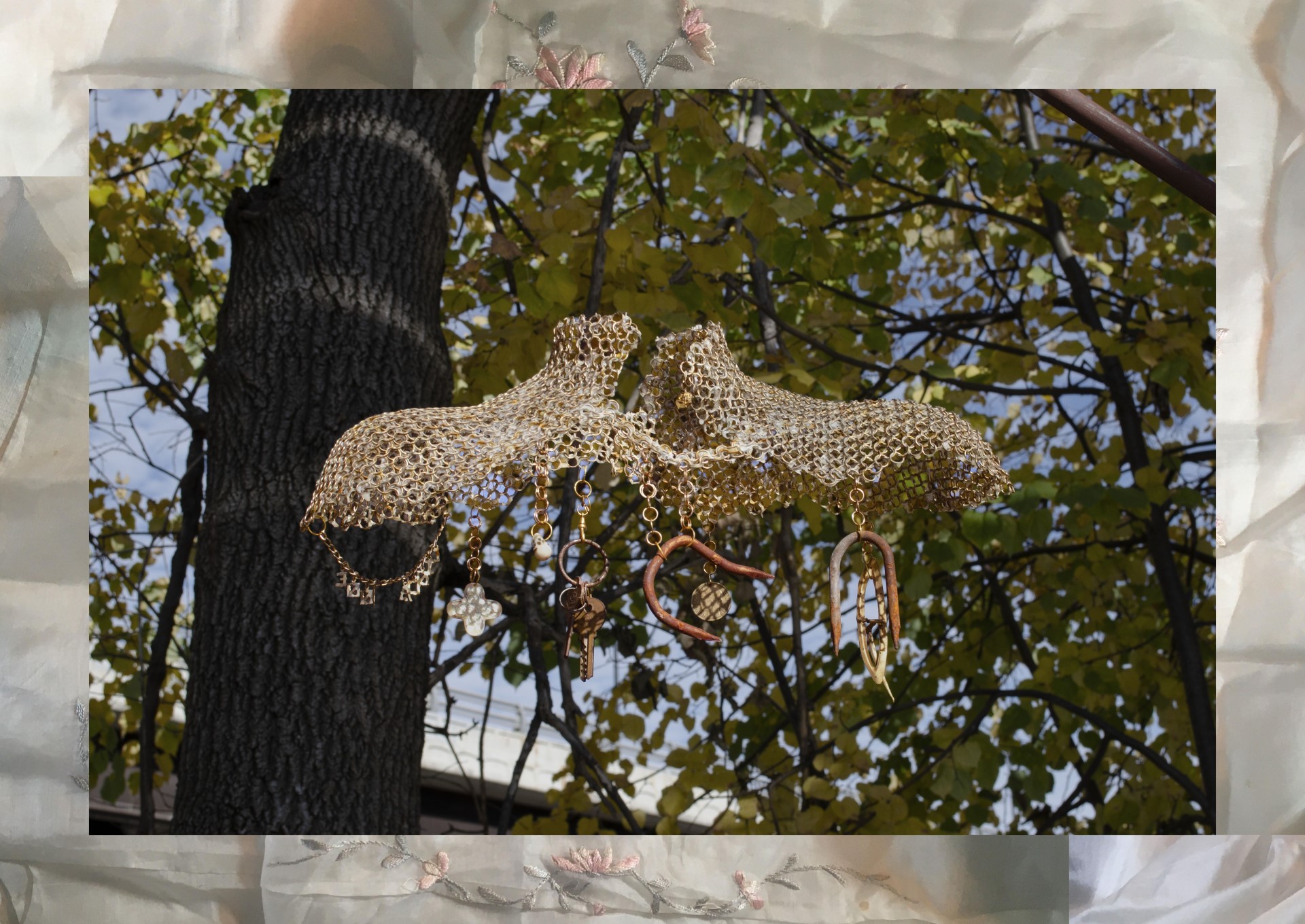Download essay by Sarah Dirks
what my ancestors wore
This work is a paper chainmail armour which retains the shape of the maker’s absent body. It comes to life at the intersection of European medieval history and Korean history and echoes the artist’s own experience of growing up biracial in western society.
Korean paper was famed throughout Asia, and its production reached its golden age during the Goryeo period (918-1392), which runs somewhat parallel to the medieval European period. There are records of it being sold to neighbouring armies as a material to make lightweight armours.
The chainmail is the most visible and visibly strong element of the piece, but it would collapse entirely without the subtle support of the organic paper. In our collective conscience, the armour has come to symbolize physical and mental and emotional protection, a way to entrap emotional fragility to be functional enough to navigate a fraught capitalist society. It subsequently turns to questions around conscious and unconscious decisions to hide and/ or to be seen, to perform oneself as a way to claim autonomy, which can also be linked to notions of visibility and invisibility.
At its core, the piece offers an ideal and idealized material trace of history, offering personal insights on what heritage means when stories have been forgotten and family heirlooms left behind.
About the Artist
flora fauna exists in between and lives in deep darkness —because there is light everywhere. their practice is born of a longing for belonging, a desire to heal the disconnect between the conscience of the self and the present moment. they work with fibres and history.

